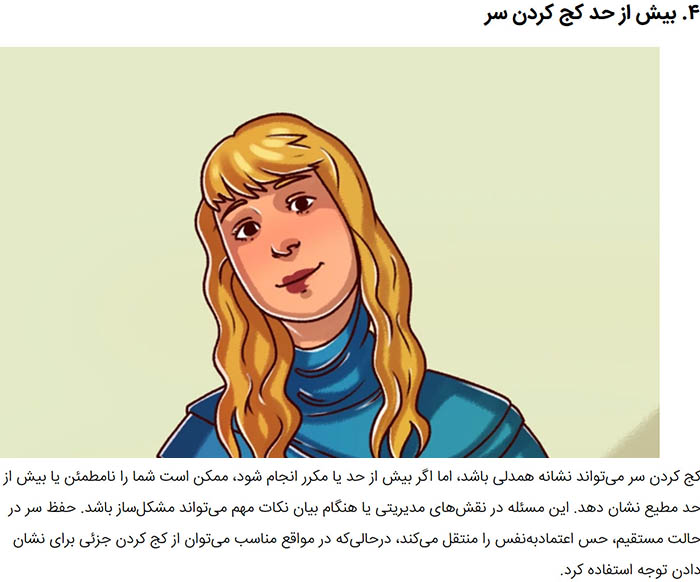Excessive Head Tilt and Its Impact on Communication
Head tilting is often associated with empathy, active listening, and openness. A slight tilt during conversations can signal attentiveness and understanding. However, excessive or frequent head tilting can unintentionally convey insecurity, submissiveness, or a lack of confidence. This nonverbal cue may undermine your authority, especially in professional settings such as leadership roles, presentations, or negotiations, where assertiveness and credibility are essential.
Maintaining a balanced posture with your head held straight helps project self-assurance and competence. It signals that you are confident in your ideas and capable of leading discussions. While it is important to show empathy when necessary, overusing head tilts may detract from the strength of your message.
To strike the right balance, be mindful of your body language. Use head tilts sparingly to demonstrate active listening when appropriate, but ensure that your default posture remains upright and composed. This subtle shift in nonverbal communication can enhance your presence, making your words more impactful and your demeanor more authoritative.
In both personal and professional interactions, being aware of how you present yourself physically is just as important as what you say. Reducing excessive head tilting can significantly improve the way others perceive you.

